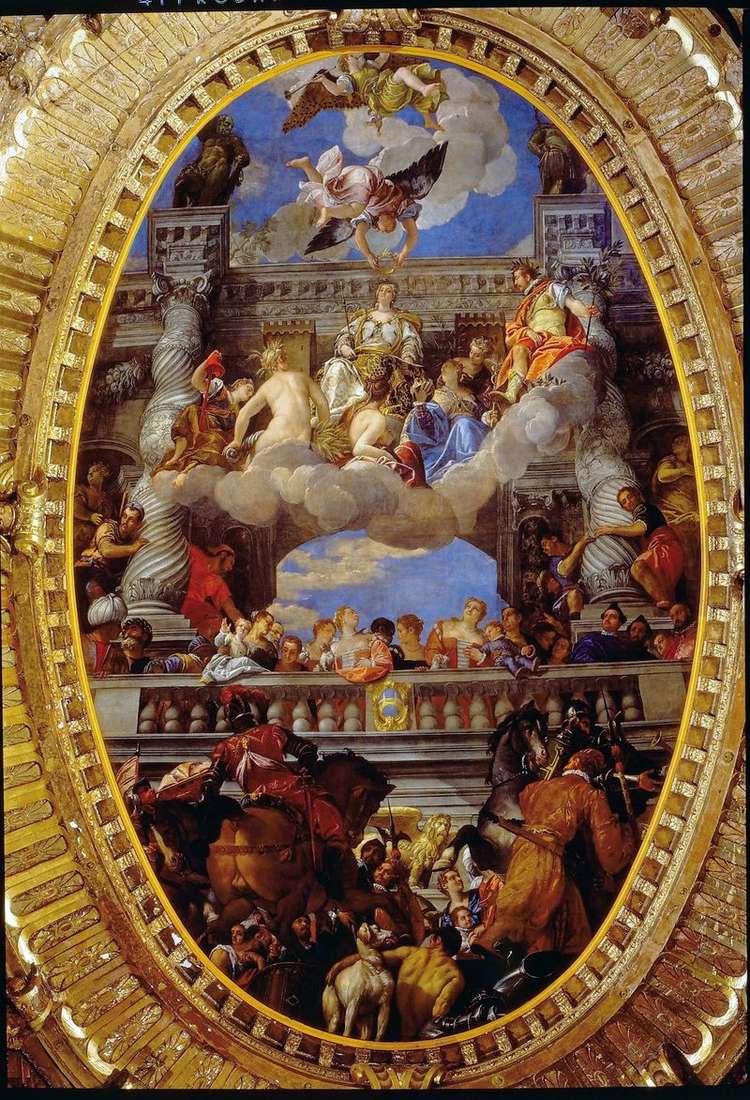
Creative destiny of Veronese was formed as it is possible more successfully. He was not yet thirty years old when he achieved official recognition and honorary government orders.
Sensitively catching public sentiment, the master always remained at the peak of popularity. His decorative and lush manner in which he wrote his multi-figured compositions and allegories fully corresponded to the secular spirit of the Venetian Republic. And the late religious works created by the artist in the period of the Counter-Reformation are a very accurate illustration of the decrees of the Council of Trent. Nevertheless, faithfully fulfilling the aspirations of the Fatherland and the Church, Veronese never changed himself, remaining, above all, a faithful servant of Art.
The Venetian Republic more than once ordered Veronese canvases for the halls of the Doge’s Palace. The artist was tasked to glorify the trade and military power of the “city in the lagoon.” The images created by him in this field can not be called majestic. In any case, the republic was always satisfied.
For the Hall of the Grand Council, destroyed by fire in 1577, the master created a grand canvas “The Triumph of Venice”, where Venice is crowned by an angel flying from heaven. Near the throne, the viewer sees many allegorical figures – these are all the virtues that thrive in the happy Venetian Republic.
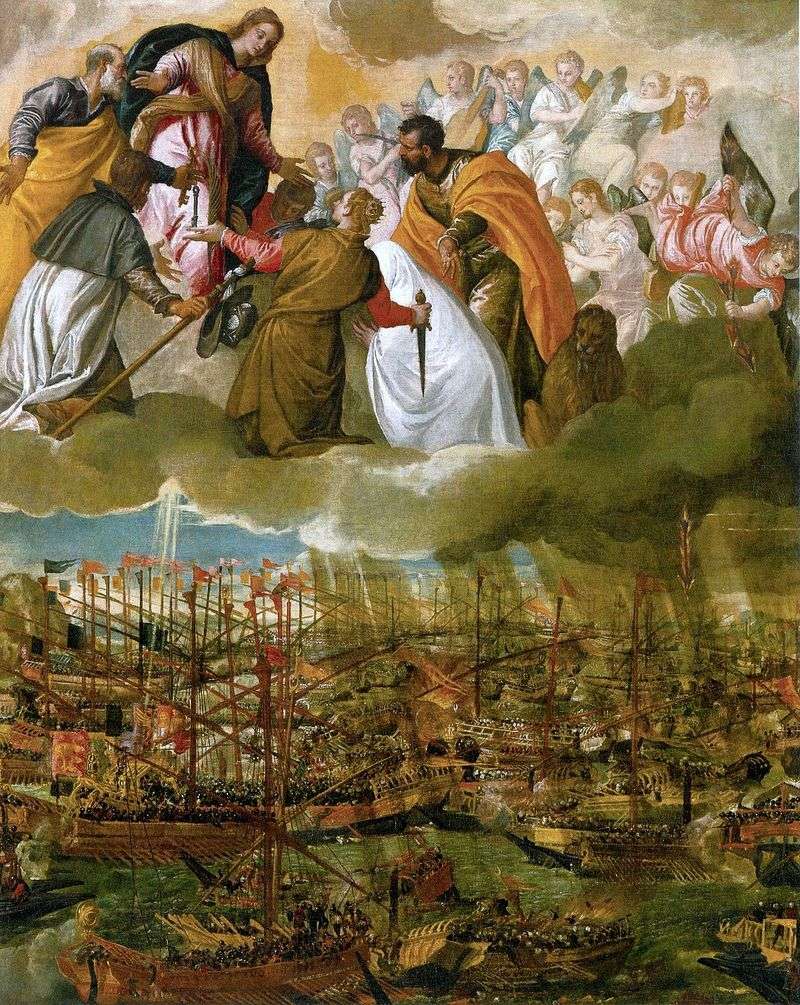 Allegory of the Battle of Lepanto by Paolo Veronese
Allegory of the Battle of Lepanto by Paolo Veronese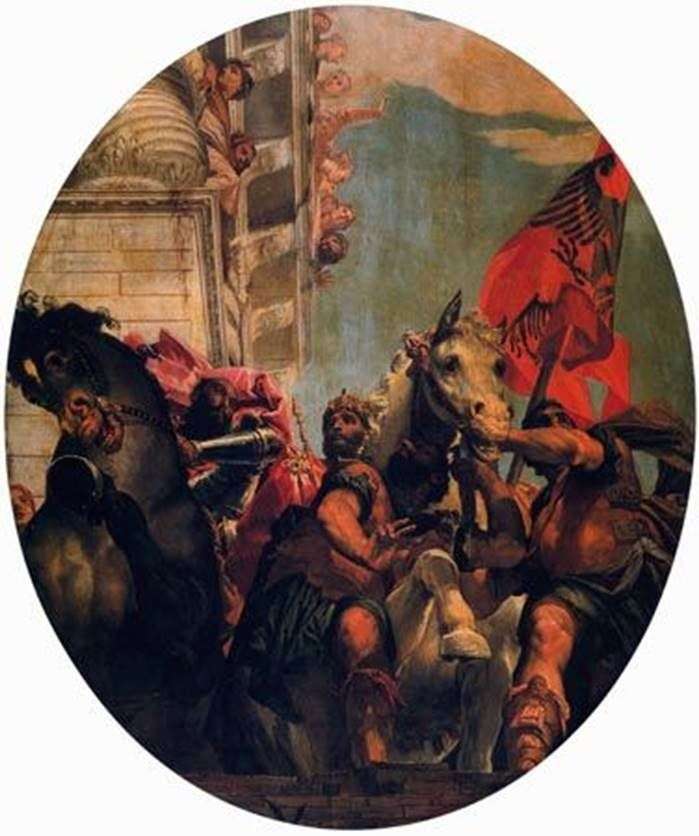 Triumph of Mordecai by Paolo Veronese
Triumph of Mordecai by Paolo Veronese Venice by the ruler with figures of Justice and Peace – Paolo Veronese
Venice by the ruler with figures of Justice and Peace – Paolo Veronese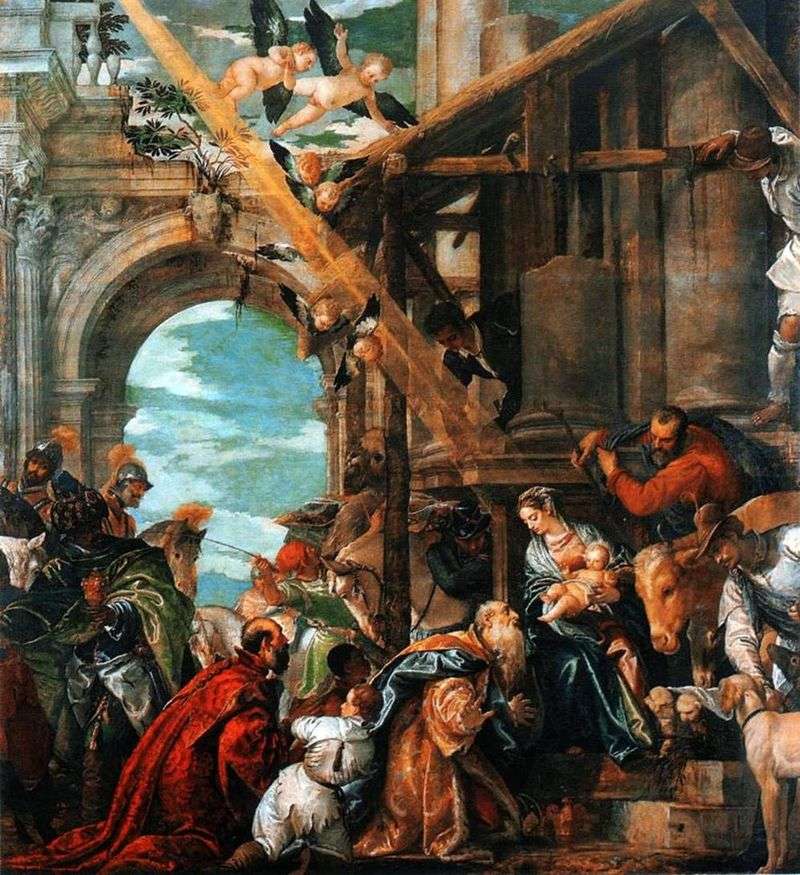 Adoration of the Magi by Paolo Veronese
Adoration of the Magi by Paolo Veronese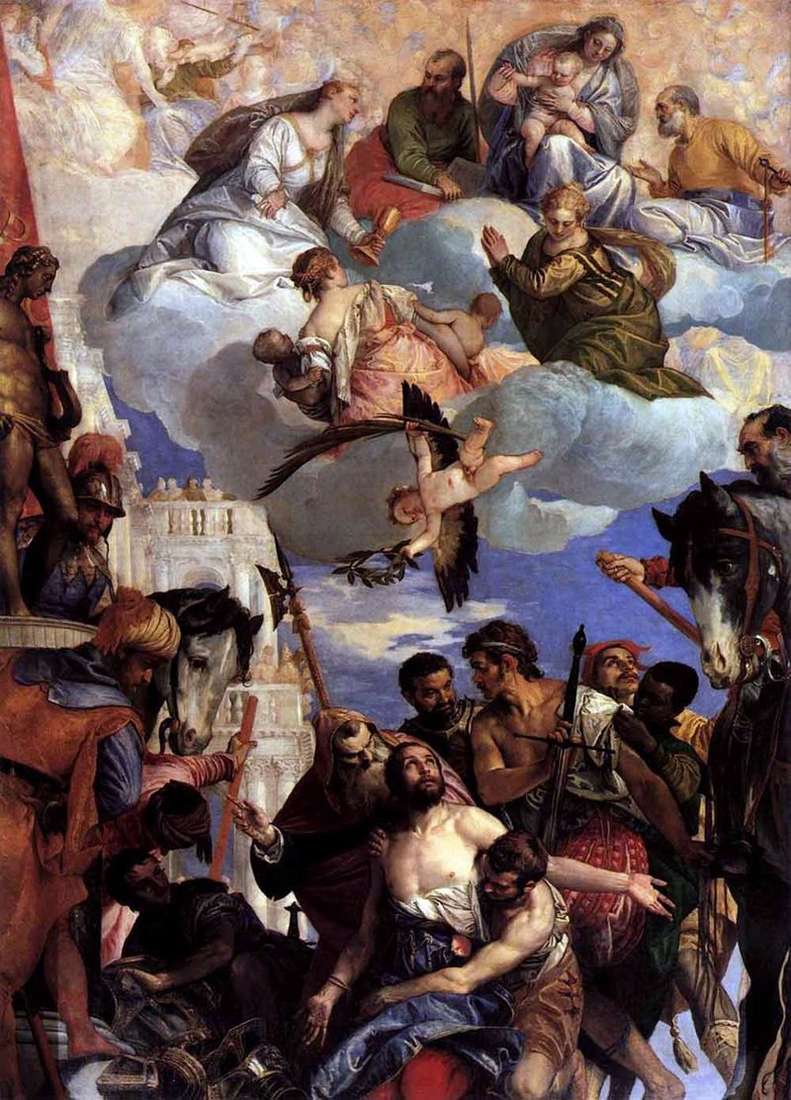 The death of St. George by Paolo Veronese
The death of St. George by Paolo Veronese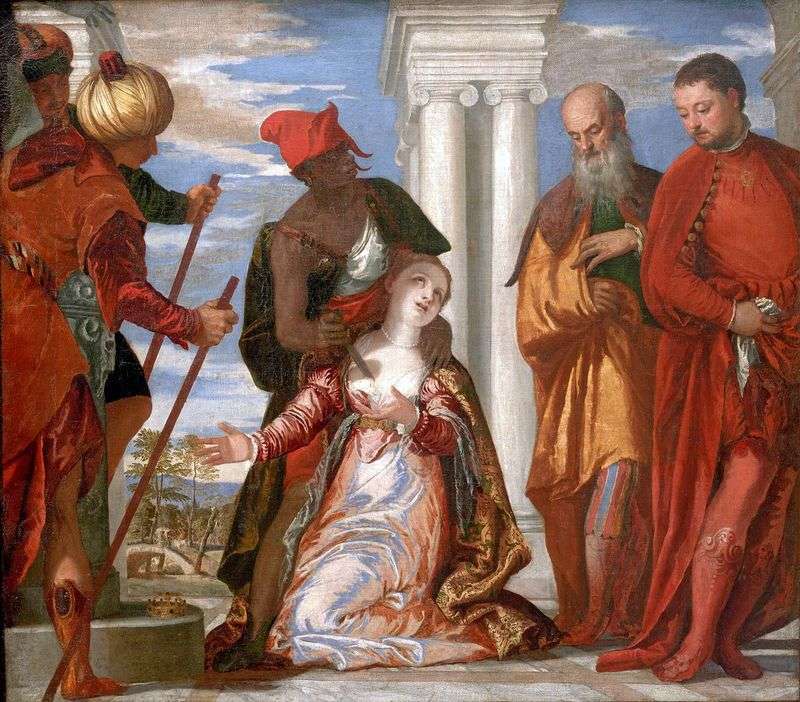 The Martyrdom of Saint Justine by Paolo Veronese
The Martyrdom of Saint Justine by Paolo Veronese Lamentation of Christ by Paolo Veronese
Lamentation of Christ by Paolo Veronese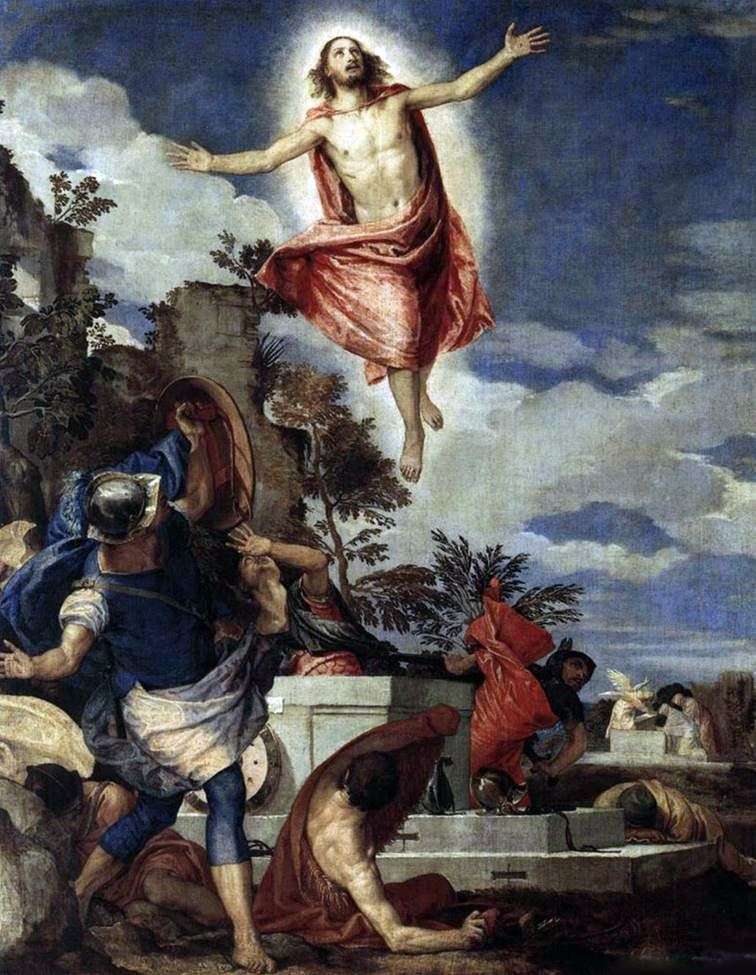 The Resurrection of Christ by Paolo Veronese
The Resurrection of Christ by Paolo Veronese